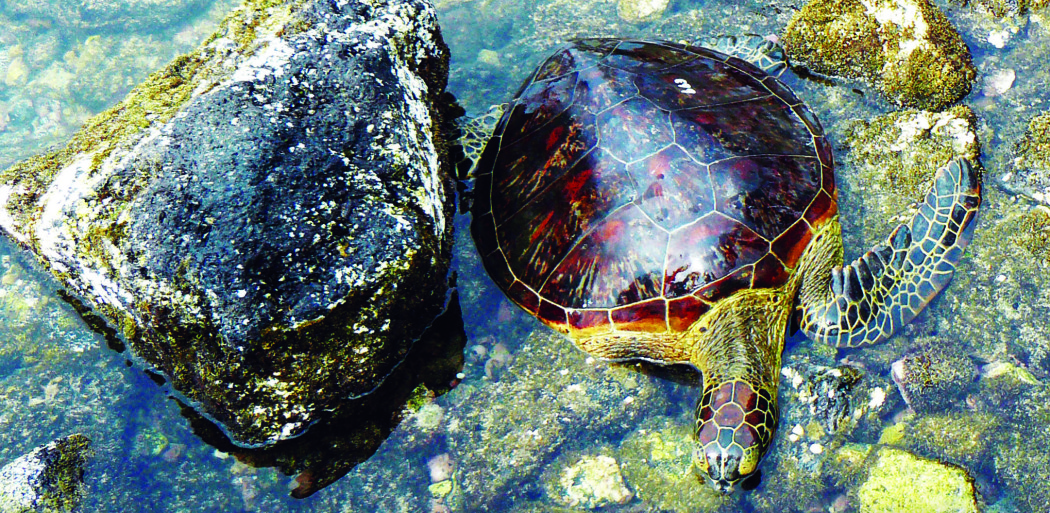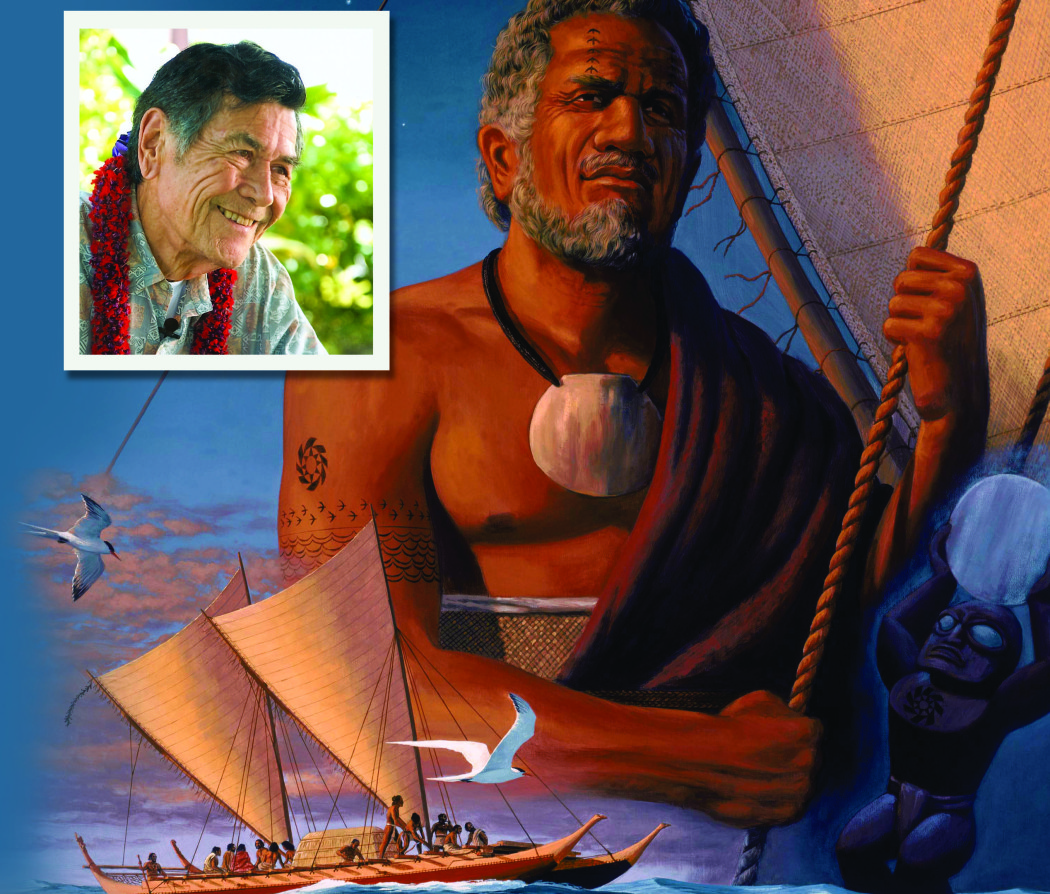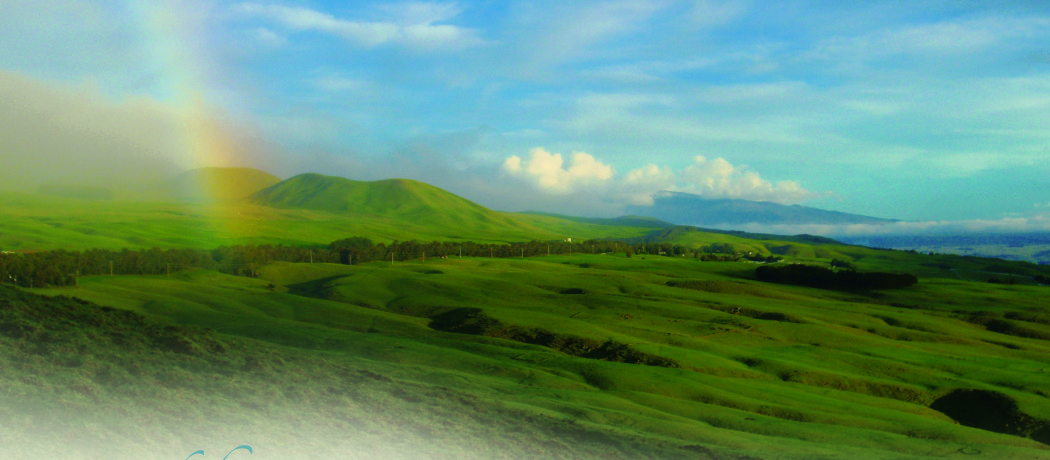
The Story of “Lefty” the Sea Turtle
 By Margaret Kearns
By Margaret Kearns
Green sea turtles (honu in Hawaiian) are among Hawai‘i’s most popular, positively charming marine creatures. Revered by ancient Hawaiians, one legend tells the story of a mystical honu, Kauila, who resided in the waters off Hawai‘i Island. Kauila, as the legend goes, possessed special powers that allowed her to change into human form to watch over the village children playing near the shore. Myth or reality, the legend may have inspired some early Hawaiian families to consider the green sea turtle a personal family deity or aumakua, never to be eaten or harmed.
Fortunately, those families’ intentions to protect the honu live today in the form of initiatives by numerous federal and state protection agencies, as well as non-profit groups and legions of trained volunteers.
Early this year, one resident of Kahalu‘u Bay in Kailua-Kona unwittingly became the poster turtle for organizations working to increase awareness about the growing threat to marine life as the world’s oceans become more and more dangerously cluttered with strangulating fiber, netting and trash.
In February, beach-goers at Kahalu‘u Bay spotted a green sea turtle—now affectionately known as “Lefty”)—with something wrapped around its right flipper. They alerted the on-site ReefTeach volunteers, who immediately initiated a multi-day effort to capture and assess the turtle’s injuries with the help of Justin Viezbicke, National Marine Sanctuary program coordinator for Hawai‘i Island.
Officials at the National Oceanic and Atmospheric Administration (NOAA) on O‘ahu were alerted and “Lefty” was transported to the facility there (the only one in the state outfitted to treat sea turtles) for further evaluation and medical treatment.
“Lefty’s right flipper was entangled in light-weight fishing line and that isn’t a good thing”, says George Balazs, who heads up NOAA’s Pacific Islands Fisheries Science Center Marine Turtle Research Program. “Several wraps of the line just tightened and tightened over weeks and likely months. The line constricted blood flow and the tissue and bones died,” Balazs said.
“The only way to save the turtle’s life was by surgical amputation of the flipper.”
The state’s expert sea turtle veterinarian, Dr. Robert Morris, performed the operation—the 55th front-flipper amputation he had completed here in 13 years—with great success. According to Balazs, he and his staff have tracked and recaptured a number of Dr. Morris’ sea turtle “amputees,” finding them in good condition years following the operations. “Lefty,” who returned to his home at Kahalu‘u Bay just 10 days after his amputation, is the most recent survivor.
Reef protection volunteers report frequent sightings of “Lefty,” who is acclimating well to his life back in the bay!
On Hawai‘i Island, the Kohala Center, an independent, not-for-profit community-based center for research, conservation and education, leads the charge in raising awareness about the fragile ocean environment and its inhabitants, including endangered species such as the green sea turtle. Its ReefTeach program at Kailua-Kona’s popular Kahalu‘u Bay is overseen by Cindi Punihaole and reaches thousands of island visitors and residents annually with its preserve-and-protect message.
According to county records, public use of this county park, with its spectacular and easily accessible snorkeling spot, tops 400,000 users annually. That fact, coupled with the great diversity of fish and coral found there, made it the perfect location when the ReefTeach program was introduced in 2000.
For more than a decade, trained volunteers (see sidebar for more information on joining the volunteer effort) have encouraged beachgoers to enjoy the unique marine experience without adversely impacting the fragile coral, reef-dwelling fish and the nearly-always-present sea turtles.
Among the high points of their “look, but don’t touch” doctrine:
- Never touch or stand on coral
- Do not remove anything from the coral reef
- Do not feed the fish
- Do not disturb, touch, attempt to ride or otherwise harass turtles swimming and feeding in ocean waters or resting on beaches or rocky shorelines
All of these directives are in line with federal and state wildlife laws fully protecting the five species of sea turtles found in Hawai‘i, the green sea turtle being by far the most common here. Under the federal Endangered Species Act, violators may be assessed fines of up to $100,000 and penalties may include time in jail.
Viezbicke works closely with government agencies and educational organizations here, including ReefTeach. He monitors and assesses endangered marine life populations and regulates negative environmental and human impacts on them. The program protects green sea turtles, monk seals and humpback whales, among other sea creatures.
“The most important message we can deliver is reminding people that these are wild animals in their natural environment. The best thing we all can do is view these marine animals from afar to avoid interfering with their natural behaviors. The less human interaction the better,” he says.
Inadvertently disturbing sleep patterns, by approaching resting turtles too closely; touching or otherwise disturbing turtles by swimming after them; chasing them from their normal feeding areas: all these, he says, can create serious long-term problems by potentially disrupting centuries of pre-programmed instincts.
Beyond direct contact, humans pose additional hazards to turtles and other sea creatures in the form of steadily growing amounts of marine trash in oceans worldwide. Death or injury due to entanglement in monofilament fishing lines and netting has grown substantially over the past two decades, according to studies, threatening a number of already endangered species. Marine experts estimate sea turtles alone account for thousands of entanglements annually in long lines, drift nets and discarded fishing gear. Ingestion of plastics and other toxic materials found in these “islands of floating trash” is responsible for even more deaths.
While Kahalu‘u is one of the most active snorkeling and turtle viewing locations on Hawai‘i Island, green sea turtles can be found in abundance at numerous locations islandwide; and, of course, the same rules and regulations espoused by volunteers at Kahalu‘u Bay apply at all beaches and shorelines in the state. (See sidebar “Best Spots”)
- To report injured turtles or turtles in distress, phone Justin Viezbicke at 808.987.0765.
- For suspected law enforcement violations, such as killing, harming, or harassing a turtle, call the NOAA National Marine Fisheries Service Law Enforcement Branch at 800.853.1964.
Some of the Best Spots to View Sea Turtles on Hawai‘i Island
The green sea turtle is found on beaches, shorelines and ocean waters around the Big Island. In addition to Kailua-Kona’s Kahalu‘u Bay, check out the locations detailed below:
- Punalu’u Beach Park is the most famous black sand beach on Hawai‘i Island. Located off Hwy. 11 on the Ka‘ū District’s south shore (between Na‘alehu and Pahala), Punalu‘u Beach Park is also home to numerous green sea turtles. The protected cove is great for swimming and snorkeling—just remember to give the turtles a wide berth in the water and on the beach!
- Anaeho‘omalu Beach Park on the spectacular Kohala Coast, north of Kona at Waikoloa Beach Resort, is a long strip of gently sloping white sand with shallow, usually-calm ocean conditions—perfect for swimming and snorkeling with the turtles that frequent the area. For the best turtle viewing head to the south end of the beach.
- Mauna Lani Beach Resort, just a few miles up the coast from Anaeho‘omalu Beach Park, boasts miles of dramatic lava shoreline, with tidepools, ponds, sheltered coves and beaches with active coral reefs teeming with tropical fish and green sea turtles. You’ll find turtles resting on the shore and swimming in the shallow waters just offshore.
- Honaunau in South Kona offers crystal clear waters fringed by pahoehoe lava in most of the area’s best snorkeling spots—“Two Step” being perhaps the most popular. It’s named for the naturally carved lava steps that provide relatively easy entry into the bay. Tropical fish and green sea turtles are plentiful here! The cove at Pu‘uhonua O Honaunau National Park is also graced by many turtles that poke their heads up to spy on visitors.
More details about The Kohala Center’s many special projects and ongoing programs can be found online at www.kohalacenter.org.
Contact writer Margaret Kearns at margaretekearns@gmail.com.


